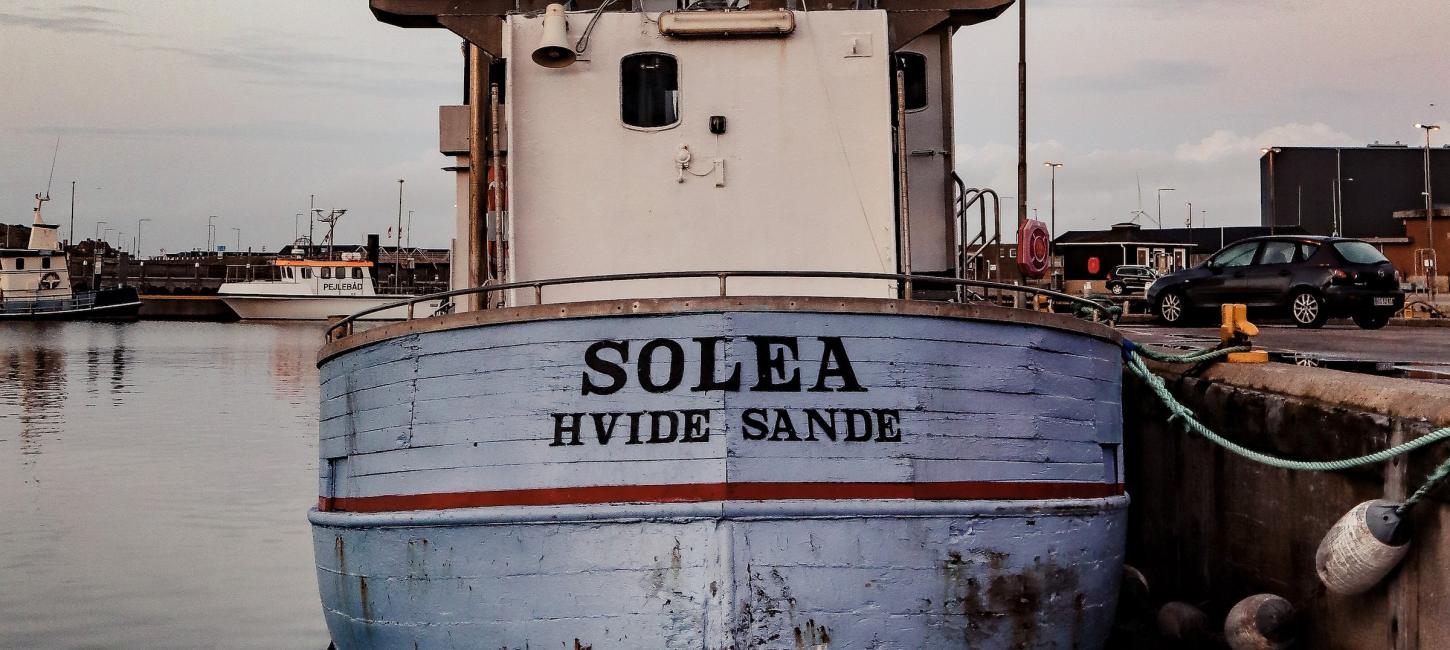
Stories from the Harbour in Hvide Sande
The harbour in Hvide Sande was built around the great water locks which were built in 1931. The fishing industry and the building of boats were the most important industries in the area for many years. Today many specially designed and special-purpose ships are built in Hvide Sande.
Fishing boats are still built in Hvide Sande and so are ships that serve other purposes. For example in 1993, Hvide Sande Skibs- og Bådbyggeri built the frigate Sct. Georg III which is a floating restaurant on a lake in Tivoli in Copenhagen. The frigate was launched in connection with Tivoli's 150 year anniversary. Ship builders from Hvide Sande go to Copenhagen every year to maintain the frigate.
Other Ship Building Projects
Ship building also includes preserving old wooden ships. The old ship Fulton, which was a training ship led by the famous captain Mogens Frohn Nielsen until 1987, is docked in Hvide Sande every winter to be repaired.
They also build off-shore service ships for the windmill industry, supply ships, ferries, and other passenger ships in Hvide Sande.
Hvide Sande's Rescue Boats
In 1933, Hvide Sande got its first rescue lifeboat. It was a very big and important job to be a lifeguard on a rescue lifeboat, partly because the sailing conditions were very tough, and partly because it was a rescue lifeboat without a roof or cabin.
The job as a lifeguard preceded all other priorities, and people in town would always keep an eye on what was going on when the rescue lifeboat went to sea. They also kept an eye on things on the stormy december night in 1951 which was a dreadful night as the boat tipped over and five crewmen drowned close to land without anyone being able to help. A monument was erected on the north side of Hvide Sande's water locks in memory of the five drowned crewmembers that night. A memorial stone has also been erected in the cemetary in Nr. Lyngvig.
Today the modern rescue lifeboat Emilie Robin is anchored in Hvide Sande. It is a seafaring motored boat equipped with radar, several radios, navigational equipment, walkie-talkies, videoplotting, and a bilge pump.
The national life-saving service has a light weight, very fast rescue boat of about 6,5 tons, that can do 35 knots. They also have a Tornado Gummibåd, which is an inflatable boat, and a rescue vehicle with special tires made for sandy terrain and for bringing a stretcher from the coast to the ambulance.
Ferries in Ringkøbing Fjord
Until 1955 ferries sailed the fjord. The motored ship Kysten which had room for 155 passengers and was owned by the bus company N.N. Møller & Søn in Ringkøbing, was probably bought because bus tires were hard to get after the war. The ship was meant to lessen the burden for the busses in the area by bringing both people and cargo across the fjord.